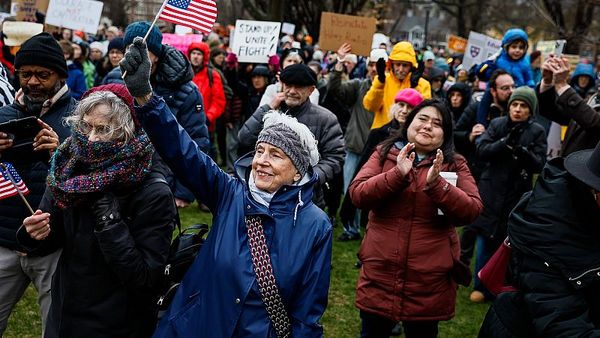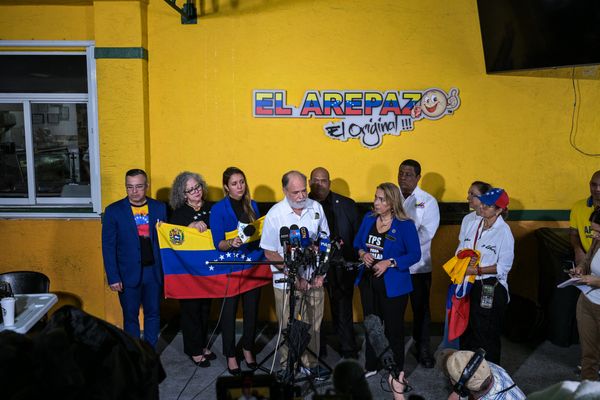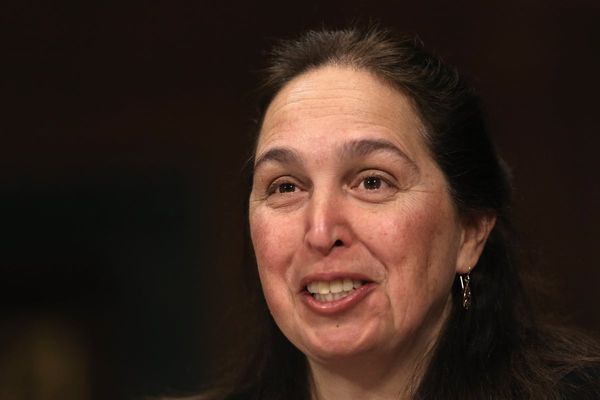
A total solar eclipse will be visible on Thursday in some parts of the world. These include Exmouth and Barrow Island in Western Australia, eastern regions of Timor-Leste and West Papua in Indonesia.
But astronomy fans will still be able to see a partial eclipse in other parts of Australia and the world.
Here’s a rundown of when and where to watch the event in Australia – and what actually happens when a solar eclipse occurs.
What is a solar eclipse?
Solar eclipses occur when the moon passes between the sun and Earth.
“In order for a solar eclipse to happen, the moon has to be perfectly blocking the sun – it has to be at the right height and alignment,” says Dr Brad Tucker, an astrophysicist at the Australian National University.
“The moon bobbles up and down by about five degrees so it’s not always perfectly aligned. You also have the fact that the distance the moon is away from the Earth changes all the time – it varies by about 40,000 to 50,000km.”
In a total eclipse, the sun is fully obscured by the moon. If the moon is a bit further away from Earth, it doesn’t cover all of the sun, resulting in an annular eclipse, in which a fiery ring of sunlight is visible. In a partial eclipse, as the name suggests, the view of the sun is partially blocked.

Total solar eclipses are not rare events – they occur about once every 18 months. But for one to recur at the same point on Earth takes about 375 years, on average.
The solar eclipse that will occur on Thursday is what’s known as a hybrid eclipse, says Tanya Hill, the senior curator of astronomy at Museums Victoria.
“It begins over the Indian Ocean as an annular eclipse, where the moon is slightly too small to completely block the sun and a ring of sunlight shines out from around the dark moon,” she says.
“By the time the moon’s shadow reaches land, it will become a total eclipse – the moon now appears large enough to completely block the sun.”
Where is the best place to watch it?
In Australia the total solar eclipse will only occur over the Ningaloo region, including Exmouth. It will start at 11.29am AWST and last about one minute, depending on location.
“It’s such a surreal experience for the sky to darken, as well as to see a change in the sun itself,” Tucker says. “It starts to get dark, it starts to feel dusky.”
When is the solar eclipse happening in each state?
Only lucky viewers in WA will be able to experience the total eclipse. People in other parts of Australia will be outside the area totally covered by the moon’s inner shadow. In other states, the event will be a partial eclipse, with the sun only being obscured to varying extents.
Perth will reach maximum eclipse at 11.21am local time, Melbourne at 2.09pm and Sydney at 2.29pm. Darwin is the capital city that will come closest to totality, reaching maximum eclipse at 1.52pm. Here is a breakdown of eclipse times in several Australian capital cities, from when the partial eclipse begins, to maximum eclipse and when the partial eclipse ends:
The magnitude of the eclipse – the percentage of the sun covered – varies a lot from place to place: from a total eclipse (100%) in Exmouth to just 13% in Hobart. Sydney (19% of the sun covered), Melbourne (21%), Canberra (19%), Brisbane (27%) and Adelaide (32%) will see much less of an eclipse than cities including Perth (77%) and Darwin (85%).
To find out what’s happening where you live, you can visit timeanddate.com or use this online map made by Xavier Jubier, a French amateur astronomer.

Is the eclipse visible from Australia’s east coast?
Along the east coast, only a partial eclipse will occur. Hill says that during a partial eclipse “there is nothing to notice or clue you in that an eclipse might even be happening”.
“Even when 90% or more of the sun’s diameter is obscured by the moon (known as the eclipse magnitude) you might only notice a very slight dimming of daylight,” Hill says. But she says “the colours and light around you may look a little strange.”
Tucker says: “The sky won’t dramatically change. But if you do have equipment you would notice that part of the sun’s missing. In some ways, it’s kind of cool because you can still see the sun looking like Pac-Man.”
How do I watch it safely?
Looking directly at the sun can result in temporary or permanent damage to the retina of the eye, known as solar retinopathy. If you want to view the eclipse directly, you should wear solar eclipse glasses that meet the international safety standard ISO 12312-2.
Affordable glasses can be bought from local retailers such as Bintel in Sydney and OZScopes in Melbourne, which are offering click and collect services.
Tucker says you can indirectly observe the eclipse by building a pinhole camera, which involves poking a small hole through one side of a cardboard box and looking at the sun’s projection on a piece of paper affixed to the other side.
“You can even get a colander, believe it or not,” he says. “The colander acts as a bunch of holes – if you hold a colander up on the side to the sun, and a piece of paper at the other end, it will project on to that piece of paper and you’ll get a disco ball effect of solar eclipses.
“You don’t want to use a magnifying glass or a telescope because that’s just magnifying the sun on the piece of paper and then you essentially have a little death ray.”
What if I miss it?
If you’re tied up during the event or there is cloud cover around the time of the maximum eclipse, one consolation is that many more solar eclipses will be visible from Australia in the coming years.
“The next one is in July 2028,” Tucker says. “It’s going to pass from Broome all the way to New South Wales.
“Pretty much every capital city will have a total solar eclipse … in the next 15 years.”







